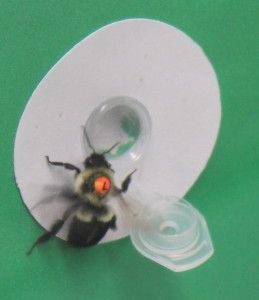Plant Research@Bates
Plant Physiology Lab, Bates College
Driven by an interest in physiological and morphological adaptations and/or responses among tree species to long-term or seasonal stress factors, research in Brett Huggett’s lab focuses on understanding the physiological responses of trees to biotic/abiotic stress with a particular interest in plant water relations and carbon allocation. Research topics include: how nutrient imbalances disrupt defense response systems in plants; possible impacts that nutrient deficiencies have on the hydrology of woody plants; and the analysis of carbon allocation patterns in woody plants in an effort to improve our understanding of forest responses to climate change. Such studies in plant physiology are enhanced by research in plant anatomy and morphology. Current research includes investigating the physiological impact of diseases damaging tree species of New England, specifically the Hemlock Woolly Adelgid and White Pine Needle Disease. With an eye on long-term stress events such as global climate change, research is ongoing investigating the impact of prolonged drought on the ability of trees to transport water and allocate carbon. Understanding how plant structure and function are influenced by pressures in the growing environment, or by interactions with other organisms, will greatly improve our understanding of tree health and ecosystem dynamics.
If you have interest in doing research in the Huggett Lab or doing a senior thesis, please contact Brett Huggett @ bhuggett at bates.edu
For more information about Brett Huggett’s lab and courses taught, click here.
Plant Ecology Lab, Bates College
Carla Essenberg’s lab studies pollination ecology, focusing on how the foraging behavior of pollinators influences plant ecology and evolution and, conversely, how plants manipulate pollinators’ behavior to improve their own fitness. Research in her lab currently centers around two questions: what shapes the rewards and information that plants provide to their pollinators and how do plants influence one another’s pollination? Many plant species provide much less nectar and pollen in some flowers than in others, which could be a way of cheating their pollinators. However, many of these species also provide floral cues that enable pollinators to tell which flowers are particularly rewarding. The Essenberg Lab is investigating the costs and benefits to plants of providing variable rewards as well as communicating information about floral rewards to their pollinators. The results will contribute to a broad understanding of how cooperation and communication are maintained in nature. Plants can help or harm each other through their effects on shared pollinators: for instance, they can help each other to attract and support pollinators, but they can also draw pollinators away from each other and reduce the effectiveness of the pollinators’ visits. The Essenberg Lab is seeking to determine when these pollinator-mediated interactions will be beneficial versus harmful to plants. The results of this work will aid in efforts to use wildflowers and cover crops to improve crop pollination as well as efforts to gauge the negative effects of invasive plant species on native plant communities.
If you are interested in doing research in the Essenberg Lab, please contact Carla Essenberg @ cessenbe at bates.edu
For more information about Carla Essenberg’s lab, click here.

